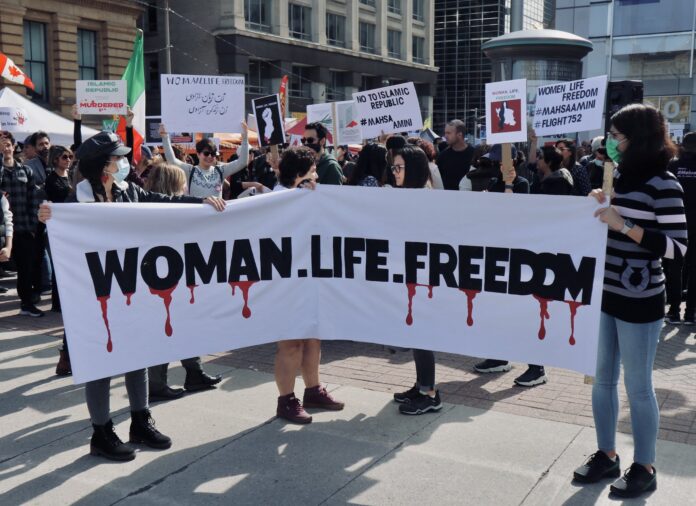On 13 September, an aspiring 22-year-old law student, Mahsa Amini, from the Kurdish Iranian community was arrested by the Gast-e Ershad (Guidance Patrol, popularly known as the Morality police) for not wearing a proper head cover and for immodest attire. She was visiting Tehran. She was with her brother when she was arrested. While at the police station, her brother was told that his sister died of a sudden heart attack and brain seizure. She was taken to Kasra Hospital in Tehran, where she lay comatose for 2 days. On 16 September, he passed away in the intensive care unit.
Witnesses to her detention said that she was abused and tortured by the police. News of her arrest and hospitalization broke out on the day of her death. While Iranian police denied any allegation of torture leading to her death, reports from the hospital and other pieces of evidence surfaced that contradicted the police narrative. Protests against the Gast-e Ershad began on 16 September, starting at the Kasra Hospital and grew. The government responded by instituting an internet blackout. Protests have continued to this day. Many prominent politicians in Iran have dismissed the protesters as rioters.

Hundreds have died in the protests and thousands have been arrested. The names of those who have died have renewed the strength of the protests, with the protests spreading across the country, including rural areas and non-Persian regions of Iran.
At the heart of the issue is Iran’s peculiar institution of Gast-e Ershad. The Gast-e Ershad is a special wing of the Iranian police dedicated to ensuring public morality and decency. They primarily enforce a dress code for women in public but have been known to come after men if they wear clothing that appears too imitative of foreign trends.
Since the 1979 Islamic Iranian Revolution, Iran implemented laws on public morality, including mandating that women wear a headscarf in public. For most of its history, these laws were enforced by the Islamic Revolution Committees, and later by the consolidated police force in 1991. The Gaste-e Ershad was established as a specialized squad of the police that reported directly to the Supreme Leader in 2005.
4. Gender and Economy
While the Islamic revolution lay the groundwork for enforced public morality, the women’s movement in Iran was always very active. At the local level, Iranian women were very involved in politics and made huge gains for themselves and society. This has been reflected in generations of local women’s leadership, high education levels for women, and female employment, even though high-level leadership were still held exclusively by men.























